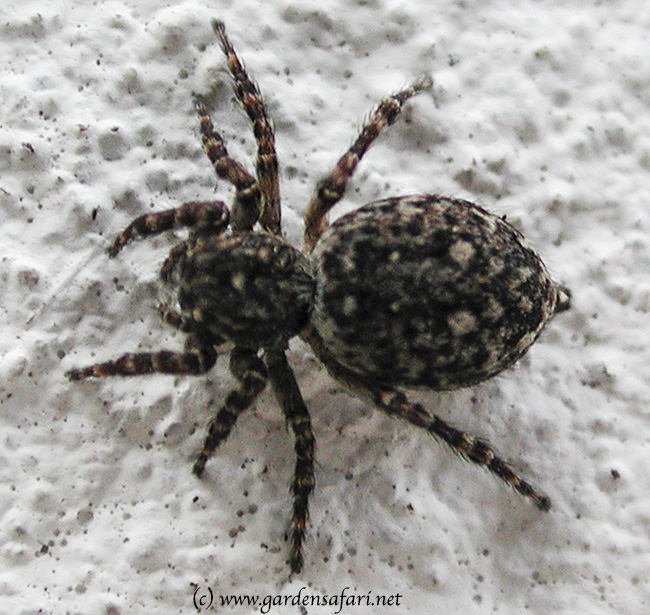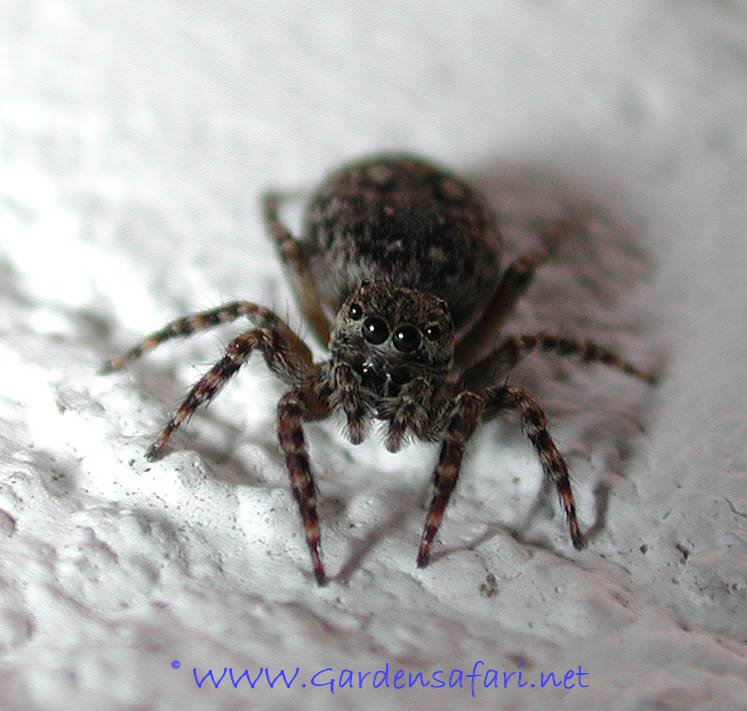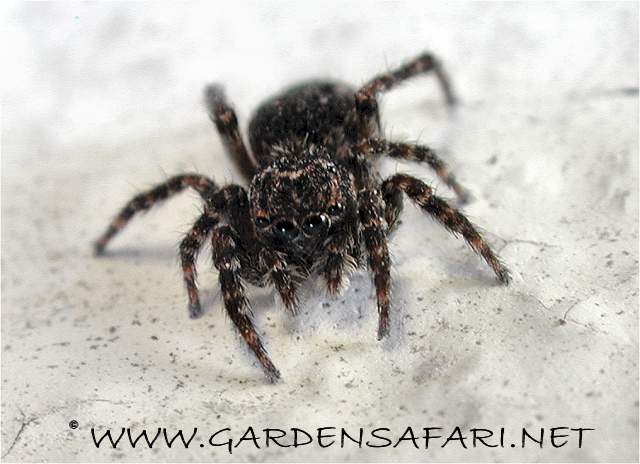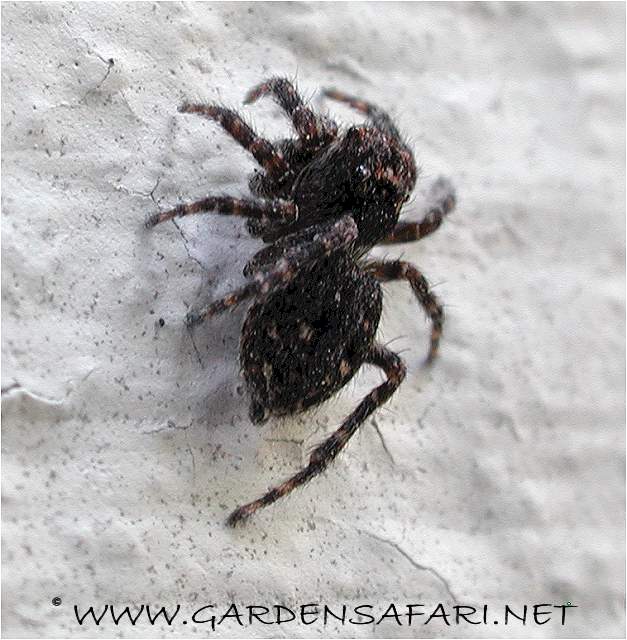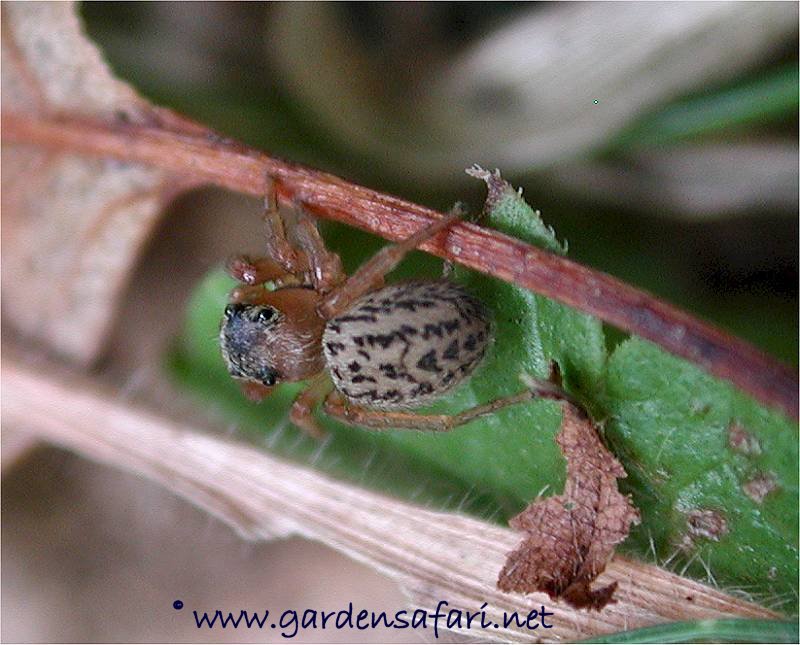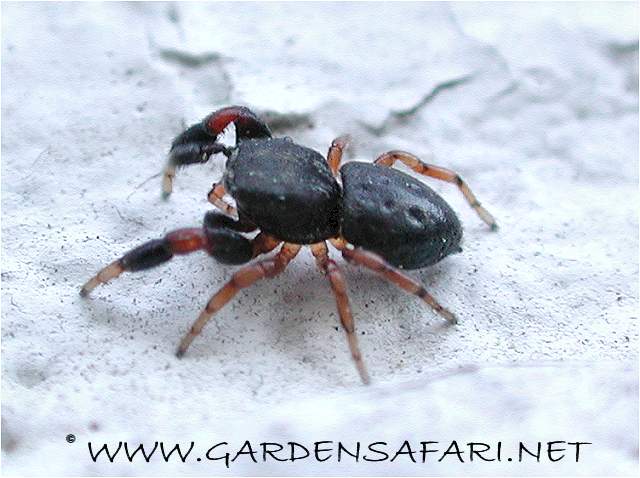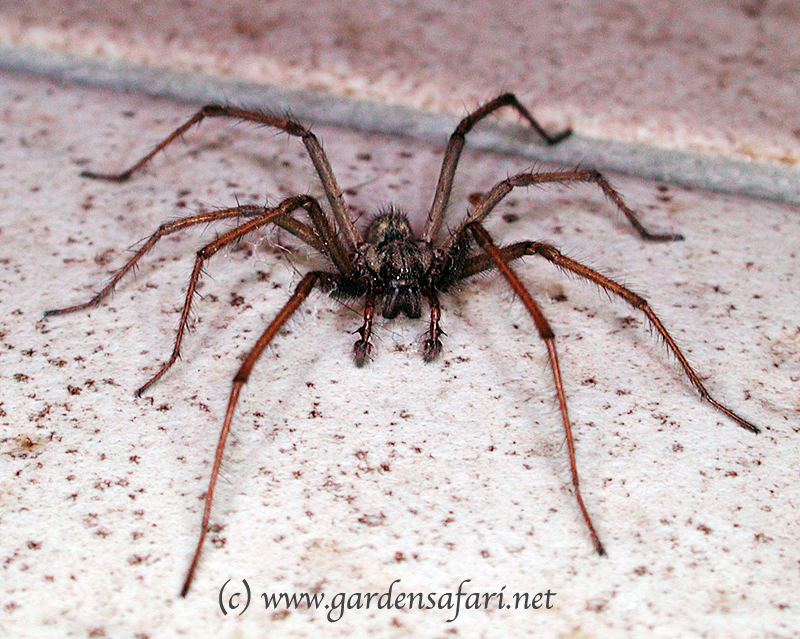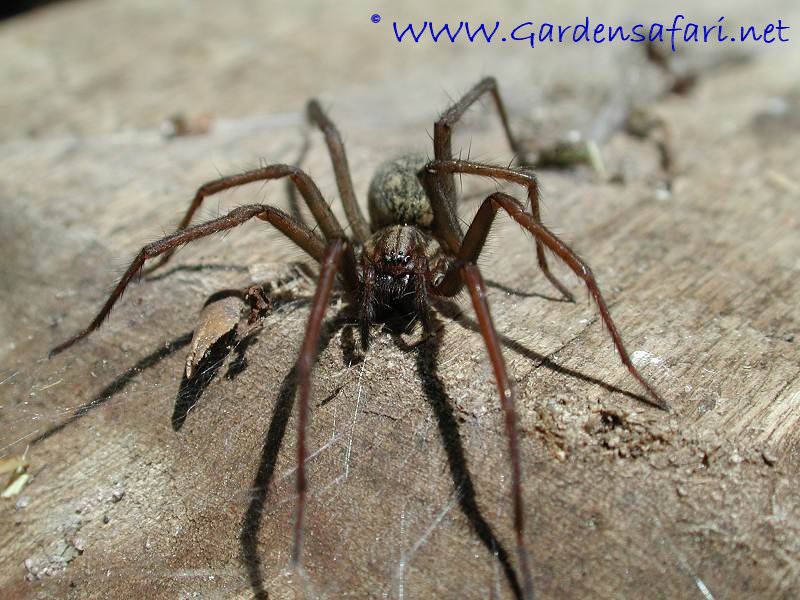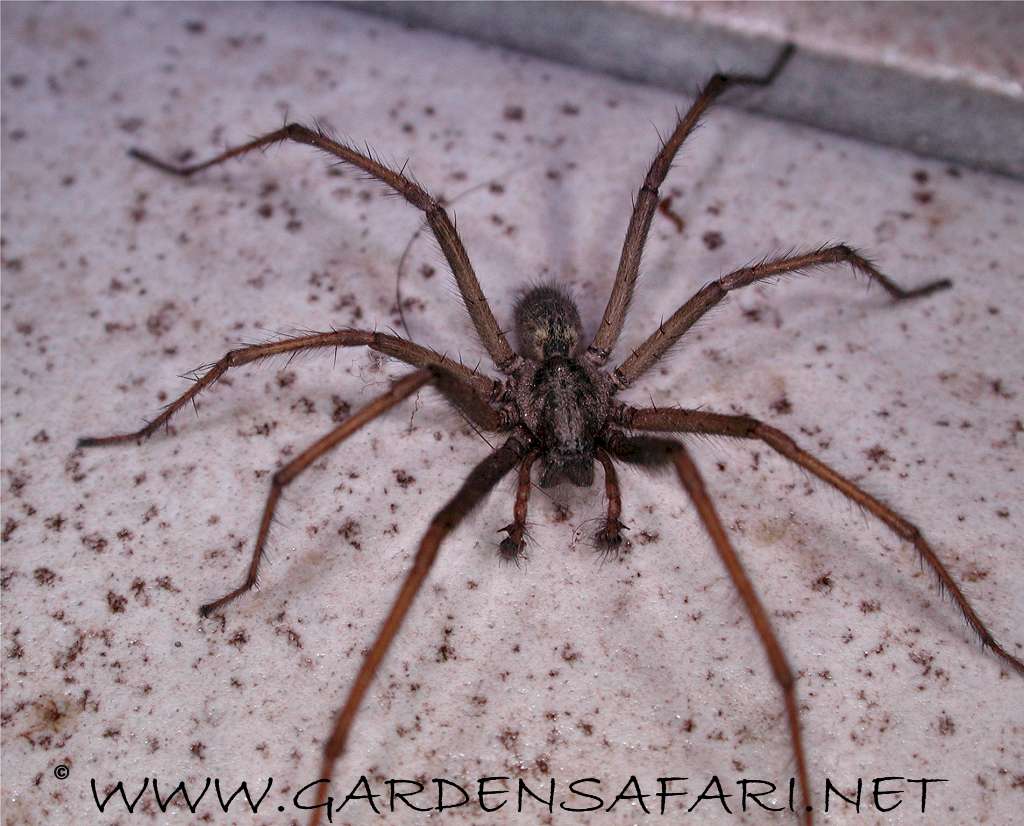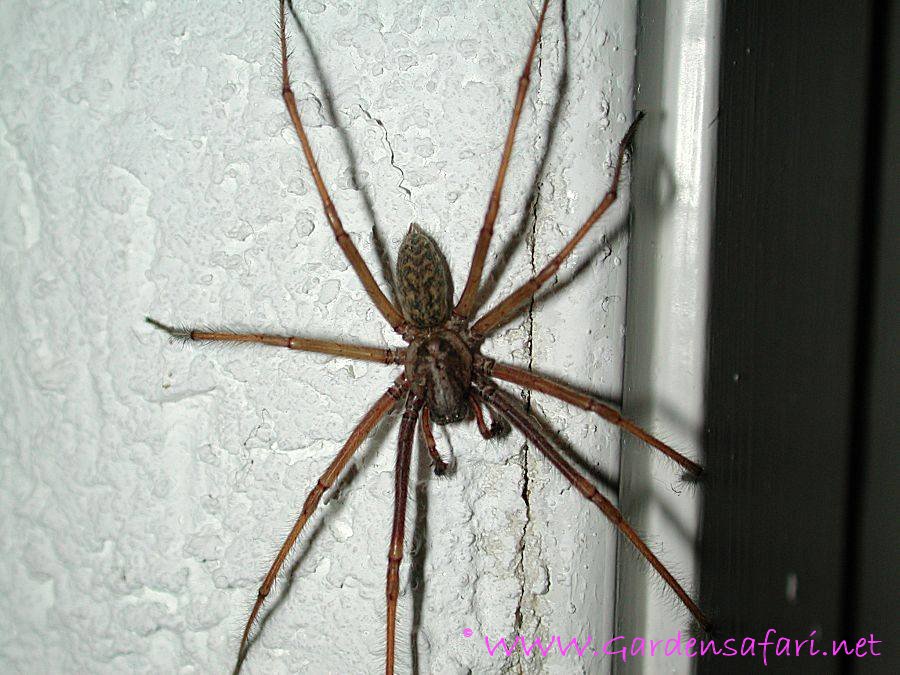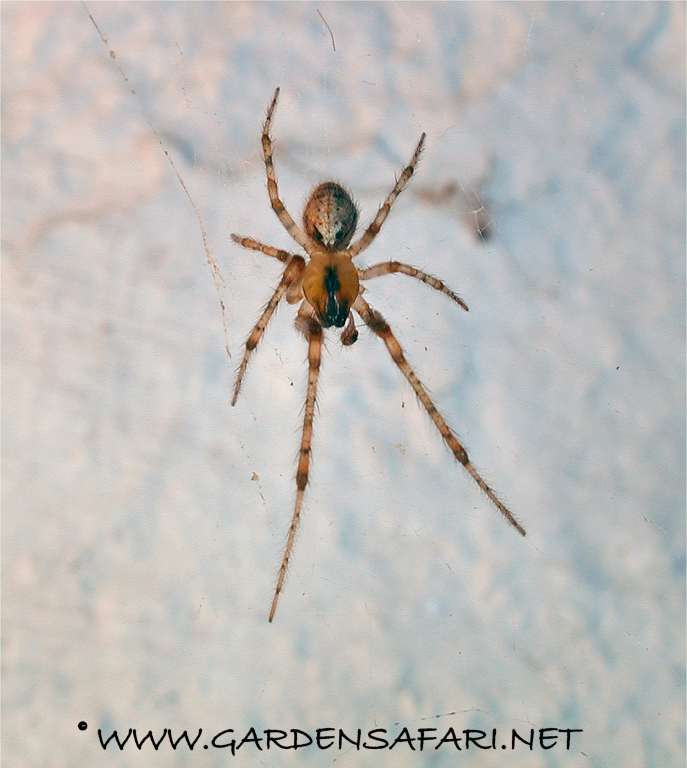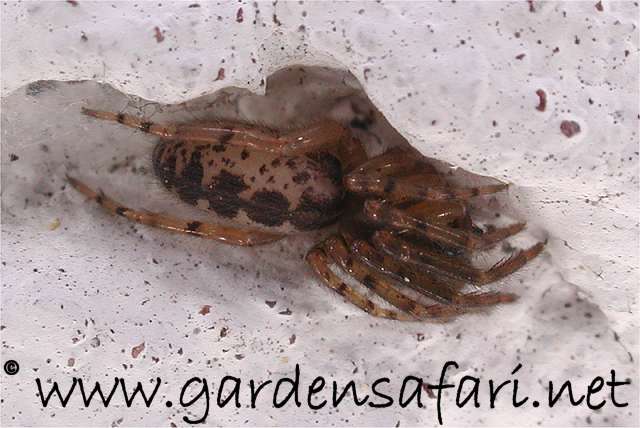Zebra Spider (Salticus scenicus)
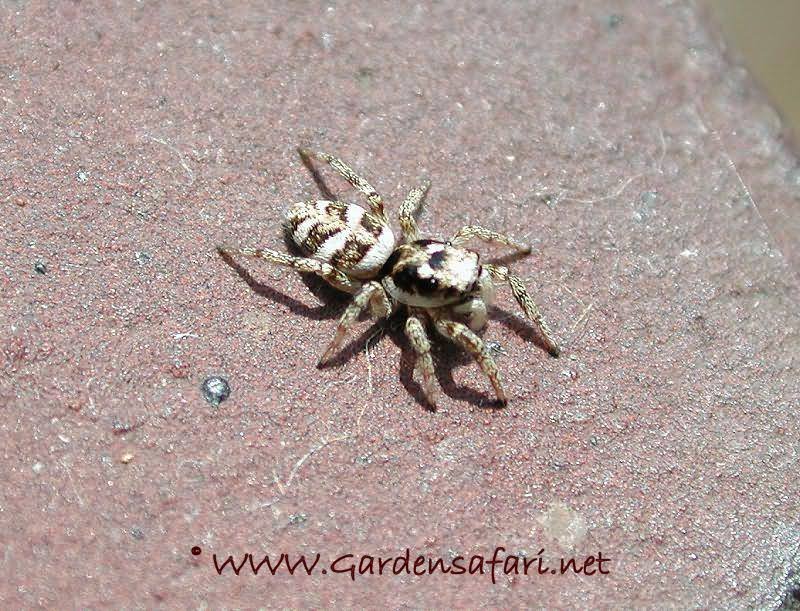
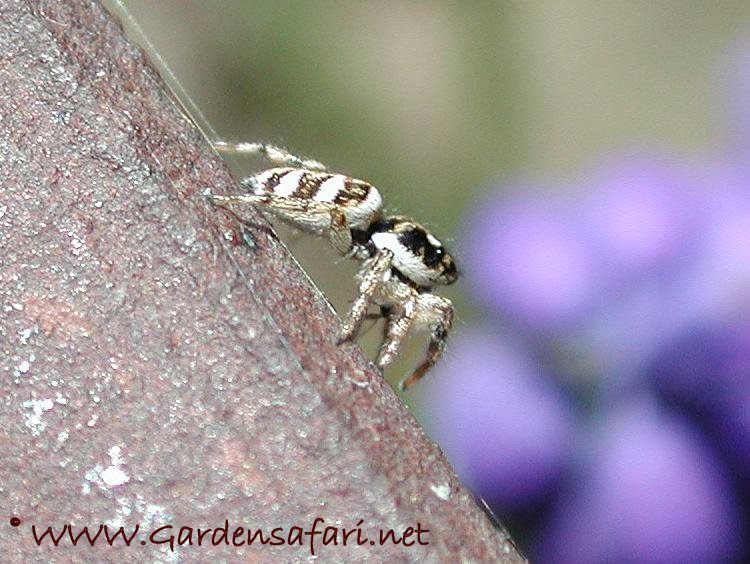
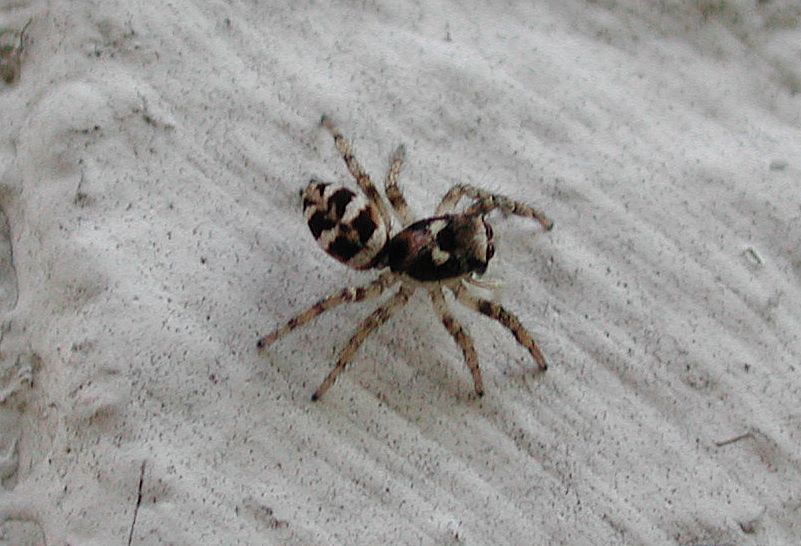
The name of this spider in Latin 'scenicus' means 'actor'. The Zebra Spider does indeed behave remarkably, as if acting or even posing and staring at the camera with its big shiny eyes. The males have giant jaws called 'chelicerae' used for fighting with other males for the territories.
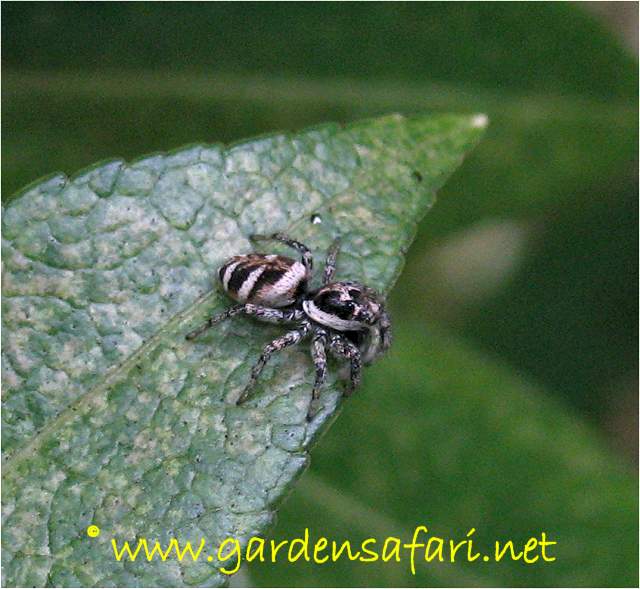
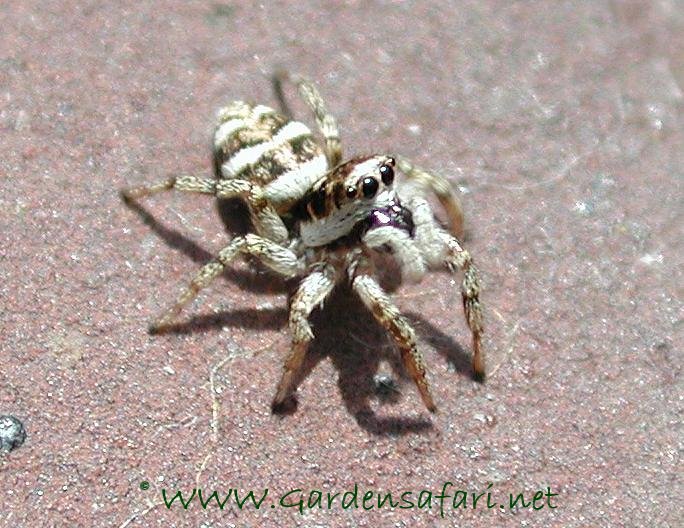
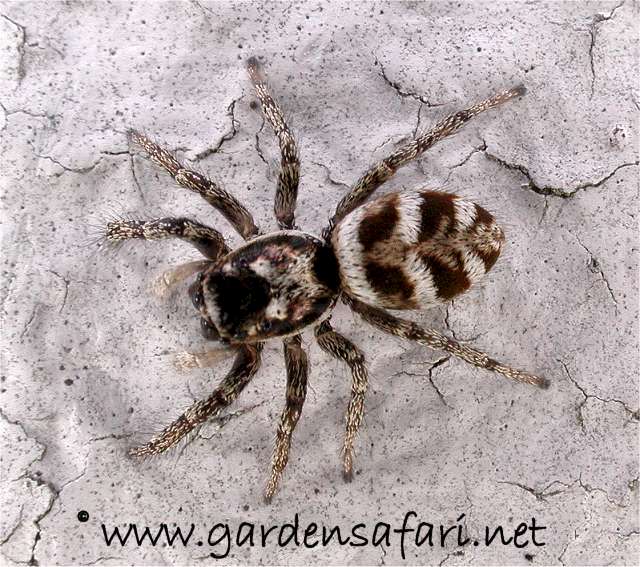



The name of this spider in Latin 'scenicus' means 'actor'. The Zebra Spider does indeed behave remarkably, as if acting or even posing and staring at the camera with its big shiny eyes. The males have giant jaws called 'chelicerae' used for fighting with other males for the territories.




